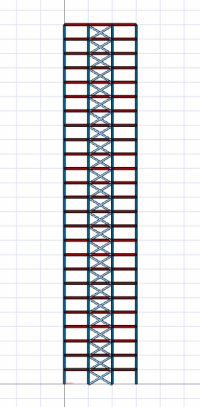Dear all,
I have been doing maths for some years now and have graduated university with a Civil Engineering Bachelors degree. I have hit some topics within my field that have some complicated maths. One thing that is confusing me in when I have equations mixed with differential equations and integrals. I understand what to do when I have an integral, and I understand what I have to do when I have a differential equation, but when they are mixed is throws me off!
For example, in a book of mine when considering the interaction between rigid frames and shear walls, the following equations are given:
[math]-EI \frac{d^3y}{dz^3} = \int_{z}^{H} (w(z) - q(z))dz - Q_H[/math]
[math]GA \frac{dy}{dz} = \int_{z}^{H} q(z)dz + Q_H[/math]
I'm not asking you to solve this. The book already does. But I get confused by this type of equation. How can I understand this?
Many thanks!
I have been doing maths for some years now and have graduated university with a Civil Engineering Bachelors degree. I have hit some topics within my field that have some complicated maths. One thing that is confusing me in when I have equations mixed with differential equations and integrals. I understand what to do when I have an integral, and I understand what I have to do when I have a differential equation, but when they are mixed is throws me off!
For example, in a book of mine when considering the interaction between rigid frames and shear walls, the following equations are given:
[math]-EI \frac{d^3y}{dz^3} = \int_{z}^{H} (w(z) - q(z))dz - Q_H[/math]
[math]GA \frac{dy}{dz} = \int_{z}^{H} q(z)dz + Q_H[/math]
I'm not asking you to solve this. The book already does. But I get confused by this type of equation. How can I understand this?
Many thanks!

